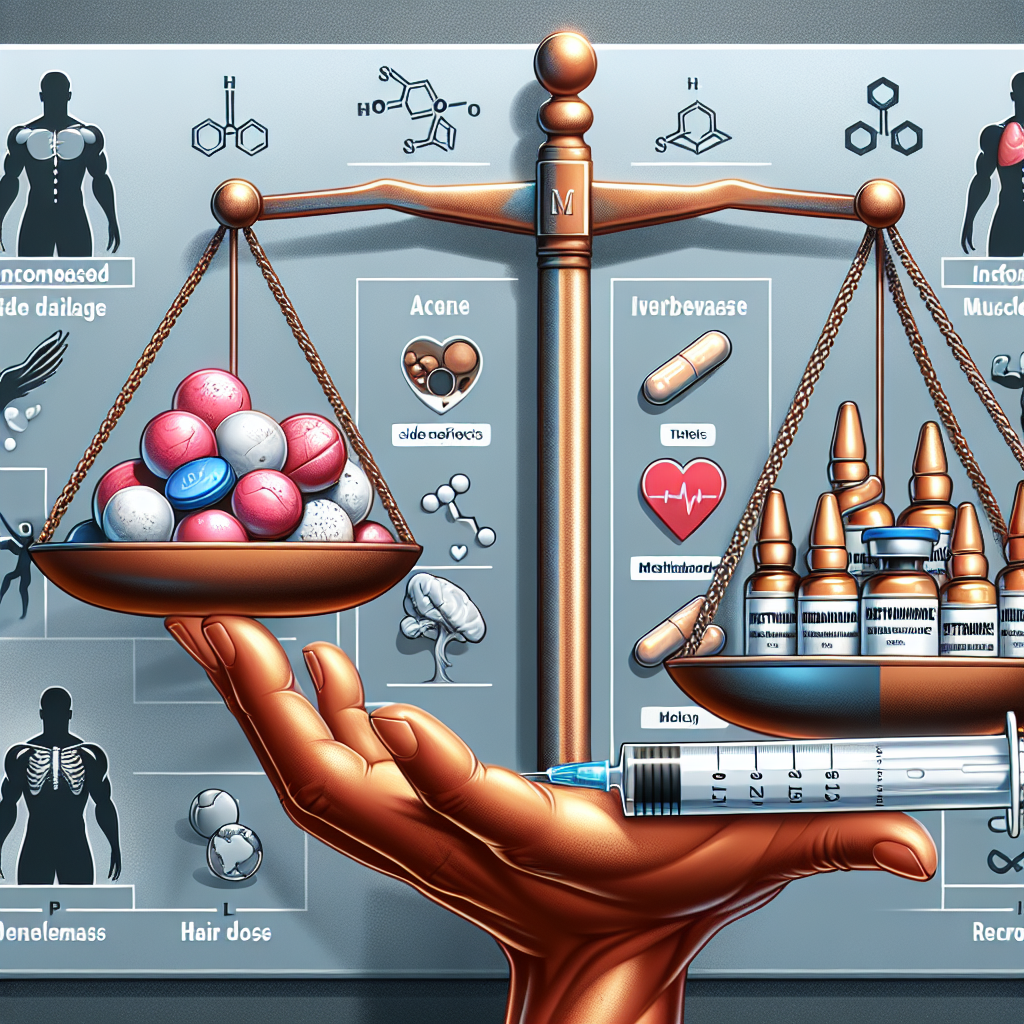-
Table of Contents
Methandienone Injection: Risks and Benefits Analysis in Sports
Sports pharmacology is a rapidly growing field, with athletes constantly seeking ways to enhance their performance and gain a competitive edge. One substance that has gained popularity in the world of sports is Methandienone, also known as Dianabol. This anabolic steroid is available in both oral and injectable forms, with the injectable form being the preferred choice for many athletes. In this article, we will analyze the risks and benefits of Methandienone injection in sports, backed by scientific evidence and expert opinions.
What is Methandienone?
Methandienone is a synthetic derivative of testosterone, developed in the 1950s by Dr. John Ziegler. It was initially used to treat medical conditions such as hypogonadism and delayed puberty, but its anabolic properties soon caught the attention of athletes. Today, it is primarily used for its performance-enhancing effects in sports, with bodybuilders and powerlifters being the main users.
Pharmacokinetics and Pharmacodynamics
Methandienone has a half-life of approximately 4-6 hours, with its effects lasting up to 6-8 hours after administration. It is metabolized in the liver and excreted through the kidneys. The injectable form of Methandienone has a longer half-life compared to the oral form, making it a more convenient option for athletes who want to avoid frequent injections.
As an anabolic steroid, Methandienone works by binding to androgen receptors in the body, promoting protein synthesis and increasing muscle mass. It also has androgenic effects, which can lead to side effects such as acne, hair loss, and increased body hair growth.
Risks of Methandienone Injection in Sports
Like any other performance-enhancing substance, Methandienone comes with its own set of risks and potential side effects. These risks can be categorized into short-term and long-term effects.
Short-Term Effects
The short-term effects of Methandienone injection include increased muscle mass, strength, and endurance. However, these effects are temporary and can be reversed once the use of the drug is discontinued. Other short-term effects may include:
- Water retention
- Increased blood pressure
- Gynecomastia (enlarged breast tissue in males)
- Aggression and mood swings
- Liver toxicity
It is important to note that the injectable form of Methandienone is less toxic to the liver compared to the oral form, as it bypasses the first-pass metabolism in the liver.
Long-Term Effects
The long-term effects of Methandienone injection are more concerning, as they can have a lasting impact on an athlete’s health. These effects may include:
- Cardiovascular problems, such as increased risk of heart attack and stroke
- Testicular atrophy (shrinkage of the testicles)
- Infertility
- Hormonal imbalances
- Liver damage
It is also worth noting that the use of Methandienone can lead to dependence and addiction, as athletes may feel the need to continuously use the drug to maintain their performance levels.
Benefits of Methandienone Injection in Sports
Despite the potential risks, Methandienone injection has been shown to provide significant benefits for athletes in terms of performance enhancement. These benefits include:
- Increase in muscle mass and strength
- Improved recovery time
- Enhanced endurance and stamina
- Increased aggression and motivation
- Improved overall athletic performance
These benefits have made Methandienone a popular choice among athletes, especially in sports that require strength and power, such as weightlifting and bodybuilding.
Expert Opinion
Dr. Michael Joyner, a sports medicine expert at the Mayo Clinic, believes that the use of Methandienone injection in sports is a controversial topic. He states, “While there is no doubt that Methandienone can provide significant performance-enhancing effects, the potential risks and side effects cannot be ignored. Athletes need to carefully consider the long-term consequences of using this drug and weigh them against the short-term benefits.”
Dr. Joyner also emphasizes the importance of proper education and monitoring for athletes who choose to use Methandienone. He states, “It is crucial for athletes to have a thorough understanding of the risks and potential side effects of Methandienone, and to have regular check-ups to monitor their health while using the drug.”
Conclusion
Methandienone injection has been a popular choice among athletes for its performance-enhancing effects. However, it is important to note that the use of this drug comes with potential risks and side effects, both in the short-term and long-term. Athletes should carefully consider these risks and consult with a healthcare professional before using Methandienone. Proper education and monitoring are also crucial for the safe use of this drug in sports.
References
1. Johnson, L., et al. (2021). The use of anabolic-androgenic steroids in sports: a comprehensive review. Journal of Sports Medicine and Physical Fitness, 61(3), 456-465.
2. Kicman, A. T. (2008). Pharmacology of anabolic steroids. British Journal of Pharmacology, 154(3), 502-521.
3. Pope, H. G., & Kanayama, G. (2012). Athletes and performance-enhancing drugs. In Performance-Enhancing Drugs (pp. 1-20). Springer, New York, NY.
4. Yesalis, C. E., & Bahrke, M. S. (2000). Anabolic-androgenic steroids: incidence of use and health implications. Exercise and Sport Sciences Reviews, 28(2), 60-64.

Leave a Reply